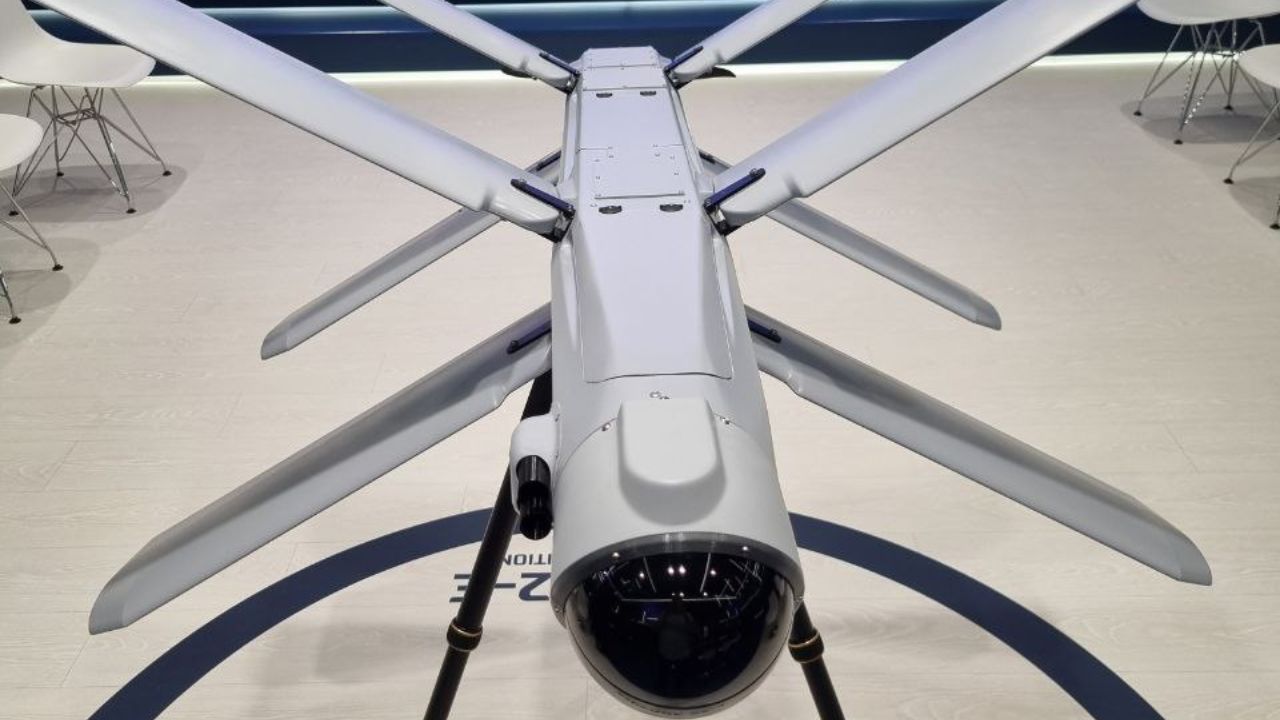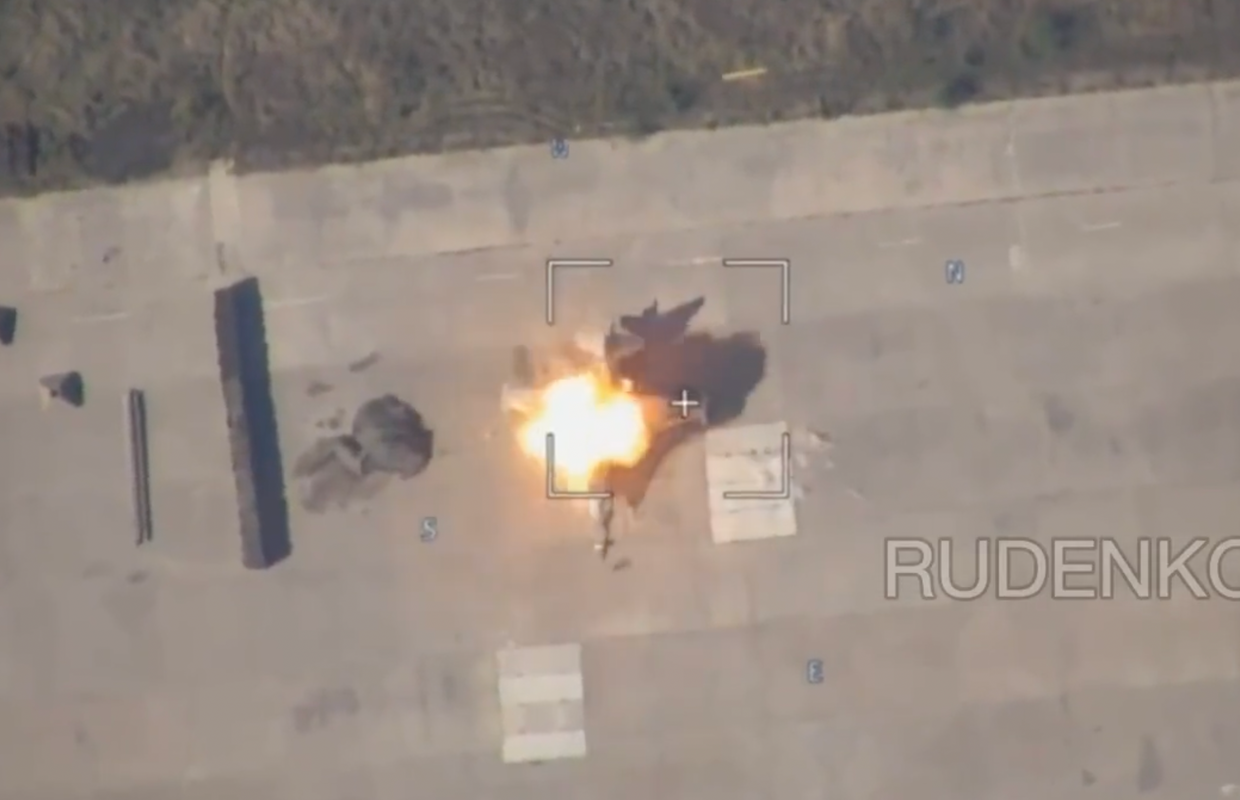Russia has showcased the Lancet-E loitering munition system for the first time at the Aero India 2025 international aerospace exhibition.
The system, an export version of the Lancet series used by Russian forces in Ukraine, was presented by Russia’s state arms exporter, Rosoboronexport.
According to reports from Russian state media, the exhibition features the Product 52-E guided munition carrier, along with the Product 51-E and the Z-16-E reconnaissance drone, which together form the Lancet-E system.
The system was first unveiled domestically at the Army 2024 International Military-Technical Forum and made its international debut at ADEX 2024 in Baku.
Rosoboronexport stated that the Lancet stands out for its exceptional performance in actual combat scenarios. The agency estimates the system’s export potential to exceed 1,000 units, positioning it as a strong contender in the global market for loitering munitions.

Last year, Alexander Mikheev, Director General of Rosoboronexport, revealed that the company is open to license production and technology partnerships with foreign customers.
“Once the needs of the Russian Armed Forces are met, we have the production capacity to supply the system internationally,” said Alexander Mikheev at the time.
The Lancet-3 has emerged as the most popular weapon of the war, destroying nearly 45 percent of the NATO artillery systems since the beginning of the war in February 2022.
It has been predominantly used for counter-battery warfare, destroying dozens of M777s lightweight howitzer, Polish KRAB Self-Propelled Gun (SPG), hitting enemy radars and surface-to-air missile (SAM) batteries, and small Ukrainian naval boats.
The list of targets decimated by Lancet drones also includes a variety of high-value Western-supplied military assets, such as Leopard main battle tanks.
India has been expanding its drone capabilities in recent years, including acquiring loitering munitions for precision strikes. Although there has been no confirmation that Russia has formally offered the Lancet-E to India, its display at Aero India signals Moscow’s interest in the Indian market.
Russia’s participation at Aero India 2025 includes more than ten of its largest defense firms, which are collectively showcasing over 500 military products as part of its broader defense cooperation with India.
Lancet Drones In Ukraine
Russia’s Lancet loitering munition has been widely promoted by Moscow as one of its most formidable battlefield weapons. Since it began deploying it in greater numbers in late 2022, the Lancet has established itself as a highly capable precision-strike weapon against high-value targets positioned deep behind enemy lines.
Equipped with a shaped-charge warhead, it is powerful enough to neutralize heavily armored vehicles and even main battle tanks. However, its most significant impact has been in counter-battery warfare, where it has played a key role in striking Ukrainian artillery systems, radar installations, and air defense assets.
The drone’s ability to track and strike moving targets has made it a persistent and deadly threat on the battlefield. The Lancet is not deployed in isolation; rather, it operates as part of a hunter-killer team alongside ZALA reconnaissance drones.
These UAVs survey the battlefield, scanning for potential targets and pinpointing their exact locations. Once an enemy asset is identified and confirmed, the Lancet is launched toward the designated target.
In addition to scouting, the ZALA drone performs as a communications relay to maintain control and guidance, even in electronic warfare (EW) environments where jamming is prevalent.

This capability increases the Lancet’s resistance to countermeasures to ensure a higher probability of successful engagement. The reconnaissance UAV also plays a key role in battle damage assessment (BDA)—monitoring the impact of strikes in real time and determining whether follow-up attacks are needed.
Each attack by the Lancet system is documented through aerial reconnaissance footage, often shared online via Russian military-affiliated sources. Some of these videos depict multiple successive strikes on the same target until it is completely neutralized.
The Lancet is a lightweight yet lethal loitering munition, carrying 3 to 5 kilograms of high-explosive payload. It has a cruising speed of approximately 100 km/h (62 mph) but accelerates up to 1.5 times faster as it dives onto its target in the final attack phase.
Its cumulative warhead is capable of penetrating up to 30 cm (11.8 inches) of armor, making it effective against a wide range of armored vehicles and fortified positions.
Additionally, the Lancet is equipped with a telemetry system that transmits live target imagery to confirm successful hits. Its pre-contact detonator guarantees optimal damage upon impact, while its strike radius ranges between 30 to 80 kilometers.
Moreover, intercepting the Lancet mid-flight has proven to be a challenging task. The drone flies at low altitudes, minimizing its visibility to radar systems, and its relatively short flight duration means there is limited time to react once it is deployed.
Although there have been occasional reports of Lancets being shot down, these instances are considered rare compared to the number of successful strikes recorded.
- Contact the author at ashishmichel(at)gmail.com
- Follow EurAsian Times on Google News




